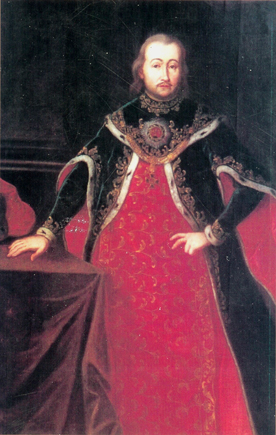Antal Grassalkovich I on:
[Wikipedia]
[Google]
[Amazon]

 Anton Graf Grassalkovich ( Ürmény, 6 March 1694 – Gödöllő, 1 December 1771) was an Imperial Real Privy Councilor, President of the Royal Hungarian Court Chamber, Chief Justice of Hungary (1731–1748), and confidant of Empress Maria Theresia.
Anton Graf Grassalkovich ( Ürmény, 6 March 1694 – Gödöllő, 1 December 1771) was an Imperial Real Privy Councilor, President of the Royal Hungarian Court Chamber, Chief Justice of Hungary (1731–1748), and confidant of Empress Maria Theresia.
Grassalkovich was appointed Royal Prosecutor (Causarum Regalium Director) in 1720 and Chief Justice of Hungary (Personalis) in 1731. On 26 May 1732, he was made a Baron. He gave up the office of Advocate General when he succeeded Count
Grassalkovich Antal
Opac nevter
* German Wikipedia {{DEFAULTSORT:Auersperg, Johann Weikhard of 1694 births 1771 deaths Hungarian nobility 18th-century Hungarian people People from Nitra District

 Anton Graf Grassalkovich ( Ürmény, 6 March 1694 – Gödöllő, 1 December 1771) was an Imperial Real Privy Councilor, President of the Royal Hungarian Court Chamber, Chief Justice of Hungary (1731–1748), and confidant of Empress Maria Theresia.
Anton Graf Grassalkovich ( Ürmény, 6 March 1694 – Gödöllő, 1 December 1771) was an Imperial Real Privy Councilor, President of the Royal Hungarian Court Chamber, Chief Justice of Hungary (1731–1748), and confidant of Empress Maria Theresia.
Biography
Anton (Antal I) Grassalkovich came from a Slovak family of Croatian descent from the lower nobility inBeckov
Beckov ( hu, BeckĂł) is a village and municipality in NovĂ© Mesto nad Váhom District in the TrenÄŤĂn Region of western Slovakia.
History
In historical records the village was first mentioned in 1208. ''Mihály de genere Bána'', royal equerr ...
.Grassalkovich was appointed Royal Prosecutor (Causarum Regalium Director) in 1720 and Chief Justice of Hungary (Personalis) in 1731. On 26 May 1732, he was made a Baron. He gave up the office of Advocate General when he succeeded Count
Erdődy
The House of Erdődy de Monyorókerék et Monoszló (also House of Erdödy) is the name of an old Hungarian- Croatian noble family with possessions in Hungary and Croatia. Elevated to the Hungarian nobility in 1459, the family was subsequently r ...
as President of the Hungarian Court Chamber in 1748, a position he held until his death. On 5 April 1743, he was raised to the rank of Count.
The Grassalkovich era was characterized by the Court Chamber's systematic efforts to organize the immigration of people willing to settle beyond the western borders of the Holy Roman Empire to colonize large parts of what was then Hungary. In connection with this, Grassalkovich acquired extensive estates in the Pest district and, in implementing these plans, rose from humble beginnings to become one of the richest men in Hungary. In the second half of the 18th century, Grassalkovich largely shaped the settlement and colonization policy of the Habsburg Empress Maria Theresia, of which he became a trusted advisor.
He had the Grassalkovich Palace in Bratislava
Bratislava (, also ; ; german: Preßburg/Pressburg ; hu, Pozsony) is the Capital city, capital and largest city of Slovakia. Officially, the population of the city is about 475,000; however, it is estimated to be more than 660,000 — approxim ...
built in 1760, as an impressive Rococo/Late Baroque summer palace with a French garden. The palace followed the model of the Royal Palace of Gödöllő, which was also built for Grassalkovich. Upon its completion, the Grassalkovich Palace was the focal point of the city's baroque music. Count Grassalkovich had his own orchestra, and his close relative Nikolaus I, Prince Esterházy
Nikolaus I, Prince Esterházy ( hu, Esterházy I. Miklós, german: Nikolaus I. Joseph Fürst Esterhazy; 18 December 171428 September 1790) was a Hungarian prince, a member of the famous Esterházy family. His building of palaces, extravagant cloth ...
, often sent him his personal composer Joseph Haydn
Franz Joseph Haydn ( , ; 31 March 173231 May 1809) was an Austrian composer of the Classical period (music), Classical period. He was instrumental in the development of chamber music such as the string quartet and piano trio. His contributions ...
, who premiered some of his works here. Numerous balls and festivities of the imperial court were also held in the palace.
Grassalkovich was depicted on the Maria-Theresia Memorial, as one of her most important administrators.
Marriage and Children
Grassalkovich married 3 times and had 5 children including, * Anton (Antal) II Grassalkovich (1734–1794), married Anna Maria Gräfin Esterhazy von Galantha. * Maria Anna (1760–1815), married Mihály Viczay His only surviving grandson, Anton (Antal) III Grassalkovich (1771–1841), died without children.See also
* Danube SwabiansSources
Grassalkovich Antal
Opac nevter
* German Wikipedia {{DEFAULTSORT:Auersperg, Johann Weikhard of 1694 births 1771 deaths Hungarian nobility 18th-century Hungarian people People from Nitra District